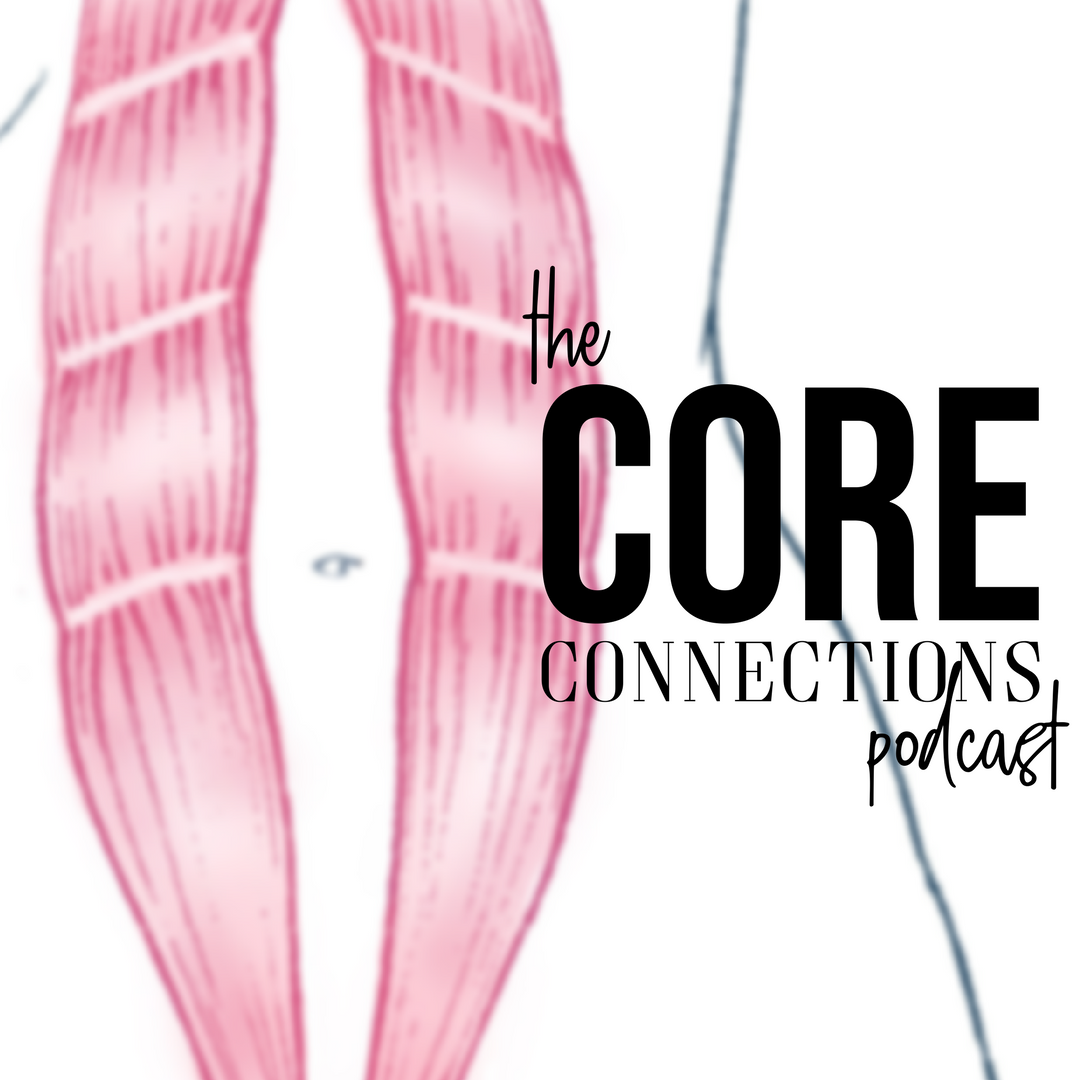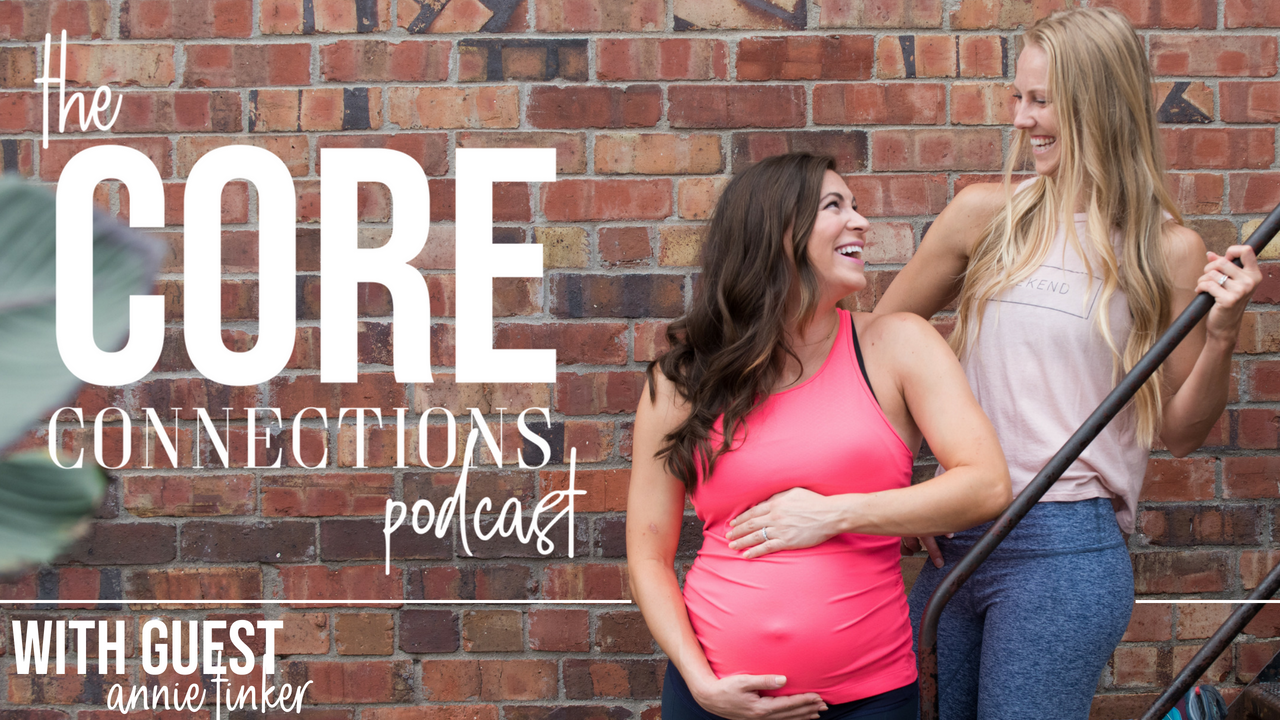I am excited to open up a conversation about diastasis recti because I get a ton of questions regarding this subject. Because there is mixed information out there, this topic can be controversial at times, but I am here to help clear some of that up. So, tune in as I answer 6 of the most common questions I get regarding diastasis recti.
1. What is diastasis recti?
It is the separating or spreading of the linea alba, the midline that runs down your abdomen. If you can visualize the six-pack muscles, it is the space between those six-pack muscles, also known as the rectus abdominis, which spread apart and widen. Typically, it’s due to the fascia in the abdominal wall being too weak or tight in the wrong places.
2. Who is affected by diastasis recti?
It does not just affect pre and postnatal women. It also affects women who have never had babies and it can affect men too.
The prenatal and postnatal world has been my area of expertise as I have a huge passion for both which inspired me to create my programs. My Prenatal + Core Rehab Membership that teaches women how to prevent, minimize and also begin healing diastasis recti during pregnancy while preparing + healing your body postpartum. My programs don’t just help with diastasis recti, but also incontinence, pelvic floor dysfunction, back pain, knee pain, posture and so much more.
How can so many people be affected by diastasis? Diastasis can be brought on by doing a lot of crunches, doing inappropriate core or ab exercises, by just not having the good fascial tensegrity and connection through the body, specifically in the abdomen.
Pre and postnatal women may experience an umbilical hernia while men can tend to experience hernias a little bit lower in their abdomen. This can be caused by the fascia not being connected or tight in the body as well as misalignment. If over the years you’ve done a lot of crunches or abdominal exercises that are super intense that were taught in that traditional crunch style, this can lead to stress in the abdomen which puts stress toward the pelvic floor.
3. Why does it matter if I have diastasis recti?
Understanding why it matters can help you to see the purpose in why you should care, why others should care, why it is imperative for other fitness professionals and doctors to bring awareness and why this needs to be addressed. It’s not just about the abdominal separation itself. You heard me already mention doing lots of crunches and how it can lead to putting unnecessary pressure on your pelvic floor, on your lower back, your lumbar spine and preventing you from creating optimal fascial connection through your core and entire body.
Having diastasis recti (or a deep core that does not function optimally) can lead to aches and pains and issues within the body that you don’t need to be experiencing.
We have to take a few steps back and re-evaluate our foundation and ask ourselves these questions as you’re going throughout your workouts:
- Do I feel pressure on my pelvic floor?
- Does this cause me pain in my low back?
- Do I feel like my abs are bulging out instead of zipping up?
- Women: if there’s any incontinence, that is a strong indicator that this exercise is not appropriate for you.
These fundamentals apply to everybody, even if you don’t have separation.
I challenge you to begin to shift your mindset. It’s not just about preventing or healing diastasis recti. It’s about what it means for your entire body.
Listen to your body. Dive in deeper. What is your body telling you?
It’s telling you something. I guarantee it. Is it telling you that the exercise or movement you are doing is positive for your body? If not, doing the same motion over and over again could be causing diastasis. It can also be causing low back pain, knee pain, neck pain, hernias and pelvic floor dysfunction. These are things we shouldn’t be experiencing! And if you are, it doesn’t matter where you’re at in life, it can be improved!
By starting to create a more solid foundation and improving your fascial connection, you can minimize and even heal your diastasis without surgery.
4. How do I know if I have diastasis recti?
Coning of the belly is an easy way to spot diastasis. It may almost look like a little alien popping out of the middle of your belly. The sides will be a little more rounded or flat and you may see this kind of ridge popping up in the middle.
This indicates the fascia between your rectus abdominis is weak. Does it mean you absolutely have diastasis? Maybe. What the coning of the belly indicates is that there’s a weakness there. Don’t get fixated on how bad the separation is. Focus on being grateful for where you are today and the fact that you can begin strengthening your deep core safely + effectively (see pelvic tilts below).
Test Your Belly for Diastasis Recti Video
When testing for diastasis, you are testing for two things:
- How that fascia feels as it is palpating down your midline. If you feel as though you can’t really feel any feedback, that’s an indication that the fascia is weak. Don’t worry – you can make that fascia better, stronger, more connected. To me, this is the most important thing when it comes to testing for abdominal separation. Now, if you feel like you can put a whole fist down through the middle of your abdomen, you are absolutely not alone. Do not think for one minute that it is so severe that you have to go run off and have surgery – it’s not. I have helped many, many women who have been able to strengthen their fascia and bring their gap together.
- This leads us to talk about space. That’s the piece where everyone seems to get hung up on. While it’s something to take note of, it’s not the most important thing. When you are palpating down the midline, take notice of how much space you have. One finger-width space is normal. There are three fascial sheets that run through our abdominal wall. There is also the visceral fascia, which runs around our organs and our intestines. It’s all connected!
5. Can I prevent diastasis recti?
The answer is most likely yes. The reason I say that is because everybody’s bodies are different. During pregnancy and postpartum, it is not 100% preventable, BUT you can work to prevent the severity of diastasis recti.
If you do nothing, the severity of the abdominal separation that you could get from having babies could be really severe. The tissue could become extremely weak and your recovery could be much more challenging.
When you learn how to properly activate your deep core, and also how to release/relax (especially during pregnancy), then you start to wake up the fascial connections of your body. Pregnancy is the best time, in my professional opinion, to learn about your core and to feel your core. It is the absolute best time to learn about your body.
Creating Improved Fascia Takes Time.
The transformation begins at a cellular level and takes time, no matter where you are at in life. The sooner you start learning proper deep core strengthening, the better prepared your body is going to be for the changes that life brings you.
Prevention…
A lot of times it starts with backing off on the high-intensity ab exercises. Stop doing 1,000 crunches a day. If your goal is to do 100 or 500 crunches every day, I challenge you to re-evaluate. There are a ton of great core exercises out there that don’t involve the drastic intra-abdominal pressure. Some of these exercises, such as pelvic tilts, are super simple yet extremely effective.
Rotational exercises are also amazing because you get the spiral fascial lines to activate.
It’s really about core function and how your whole body is moving and functioning together. The fundamentals are key!
If the focus is just on preventing and healing diastasis recti, you’re missing the bigger picture.
Diastasis recti is more than just about the ‘abs’, it’s about the entire core function. By creating more fascia, you can work to heal diastasis recti and more importantly, improve your core function!
6. Can I heal diastasis recti? If so, how?
(Be sure to read my response to #5 above then continue on below…)
Healing diastasis recti is not just bringing the abs back together. It’s about releasing the other areas that are restricting proper core function and may be preventing or making it harder for your abdominal separation to heal. It’s about feeling that deep core connection from the base of the pelvis and pelvic floor that draws up through the middle of the body and spine. This helps to activate and zip up the fascia through the core, around the ribcage, all the way up through the top of the head.
It’s a full body approach and not just specifically about the diastasis itself.
Digestion…
Digestion plays a huge role in your core function. If you feel bloated a lot, it could be caused by your intestines sitting in the weaker and stretched area of your abdomen, causing your belly to appear bigger than it really is. Doing simple things such as a stomach massage to help get things moving, can be very effective.
Here are some key tips and reminders when beginning to heal your diastasis:
- Stop doing exercises that could be contributing to diastasis recti. This includes crunches and other exercises that put excessive pressure on your abdomen and/or pelvic floor.
- Keep in mind it takes time to create these new fascial connections.
- Be mindful of your posture throughout your day.
- Remember – everybody’s bodies are different. Do exercises that help you feel most connected and may change as your body becomes more connected.
Healing diastasis recti is much more a full body approach – not just about the ‘abs’. No matter what you’re doing, your core is always working.
Whatever you’re doing, when you’re going to do your next workout, when you’re walking, when you’re in the car, when you’re carrying a toddler around, whatever it might be, ask yourself, “is my core working?”
Be grateful for where you’re at today, even if you are dealing with severe diastasis, pelvic floor dysfunction, back pain, neck pain, etc. You can get rid of all those aches and pains because I’ve seen it happen over and over again.
Get out of your head. Get into your body.
Feel what your body has to tell you, listen to your body and start focusing on what your body/core is telling you it needs.
You have to just jump in and get started and remember to be patient with your body. It takes time to rebalance your body and to create new and better fascia. You have to re-strengthen the right stuff and release the tight stuff. I teach you step-by-step how to do this in my Core Rehab Program.
One thing I haven’t mentioned yet, but need to… is even if you have had or you are planning to have surgery to heal diastasis or you’ve had a doctor recommended surgery to heal diastasis because they think your diastasis is so severe, you should know that surgery doesn’t actually fix the fascia.
Surgery cannot simulate the fascia to work. You have to do that yourself, through the correct movement and breath work.
If you plan to have surgery down the road for something in your abdomen, the sooner you start to wake up that fascia in your abdomen and become more connected through your core, the easier that surgery and recovery will be.
Please share this information with someone else that you know who could benefit from this. Help me bring awareness to diastasis recti and more importantly core function. So many are left feeling like there’s nothing they can do or wish they had known their options.
I get this often… “Erica, I wish I had known, either then I could heal this or I could’ve done something to prepare my body.”
If you have additional questions about anything regarding diastasis recti, please reach out to me on social media, Instagram and Facebook.
Episode Quotes











5 Comments
time does fly in a flash…hitting gym and diet what not! but never reach the desire shape…however this year may be just what need by this sequence…https://bit.ly/2Hb2GFy i might just get what i need
Through your pen I found the problem up interesting! I believe there are many other people who are interested in them just like me! How long does it take to complete this article? I hope you continue to have such quality articles to share with everyone! I believe a lot of people will be surprised to read this article! Thanks for your post!
Hi, this weekend is nice in favor of me, for the reason that this time i am reading this enormous informative article here at my residence.
i play game in slopex.net when i’m bored in school